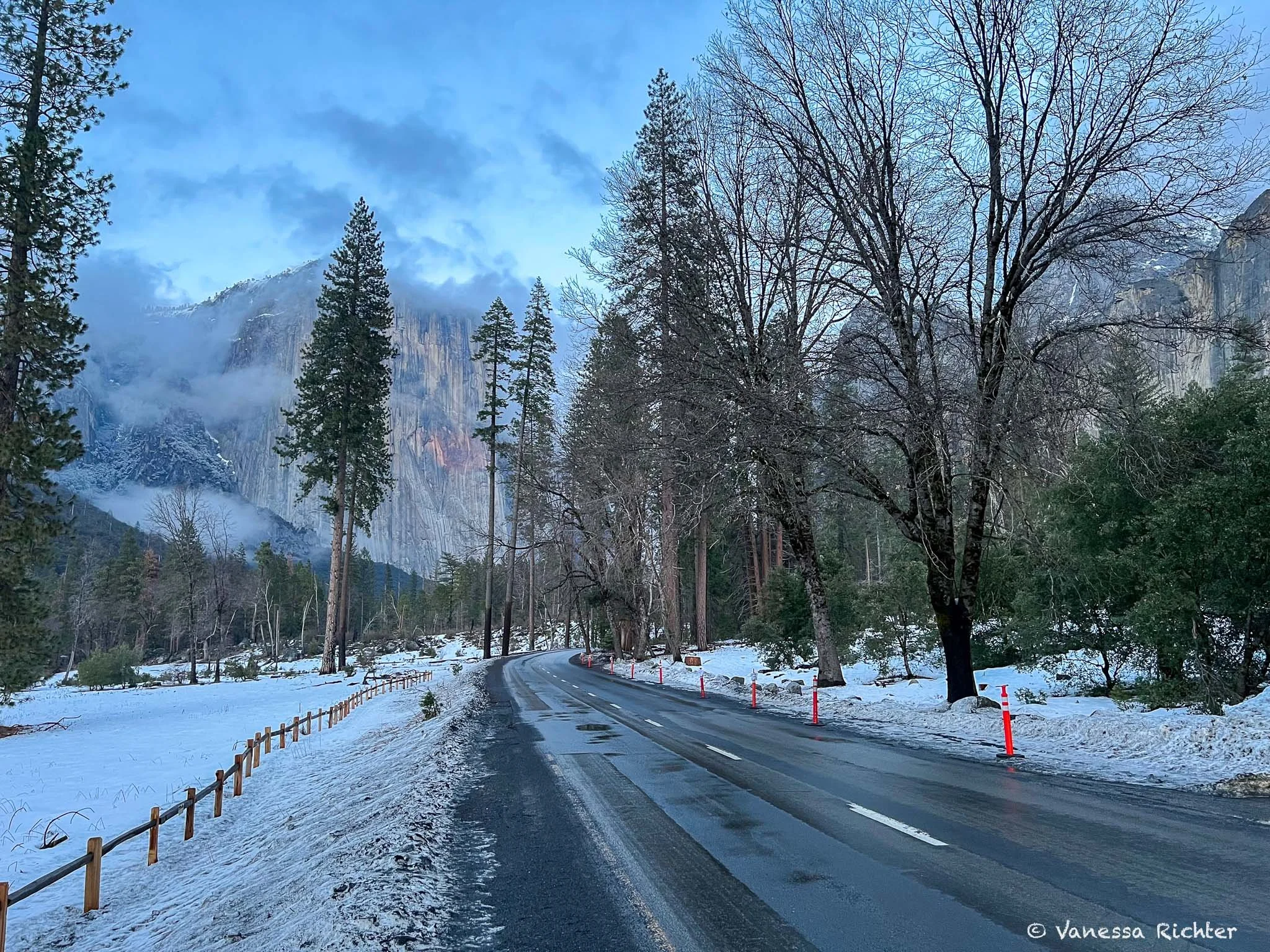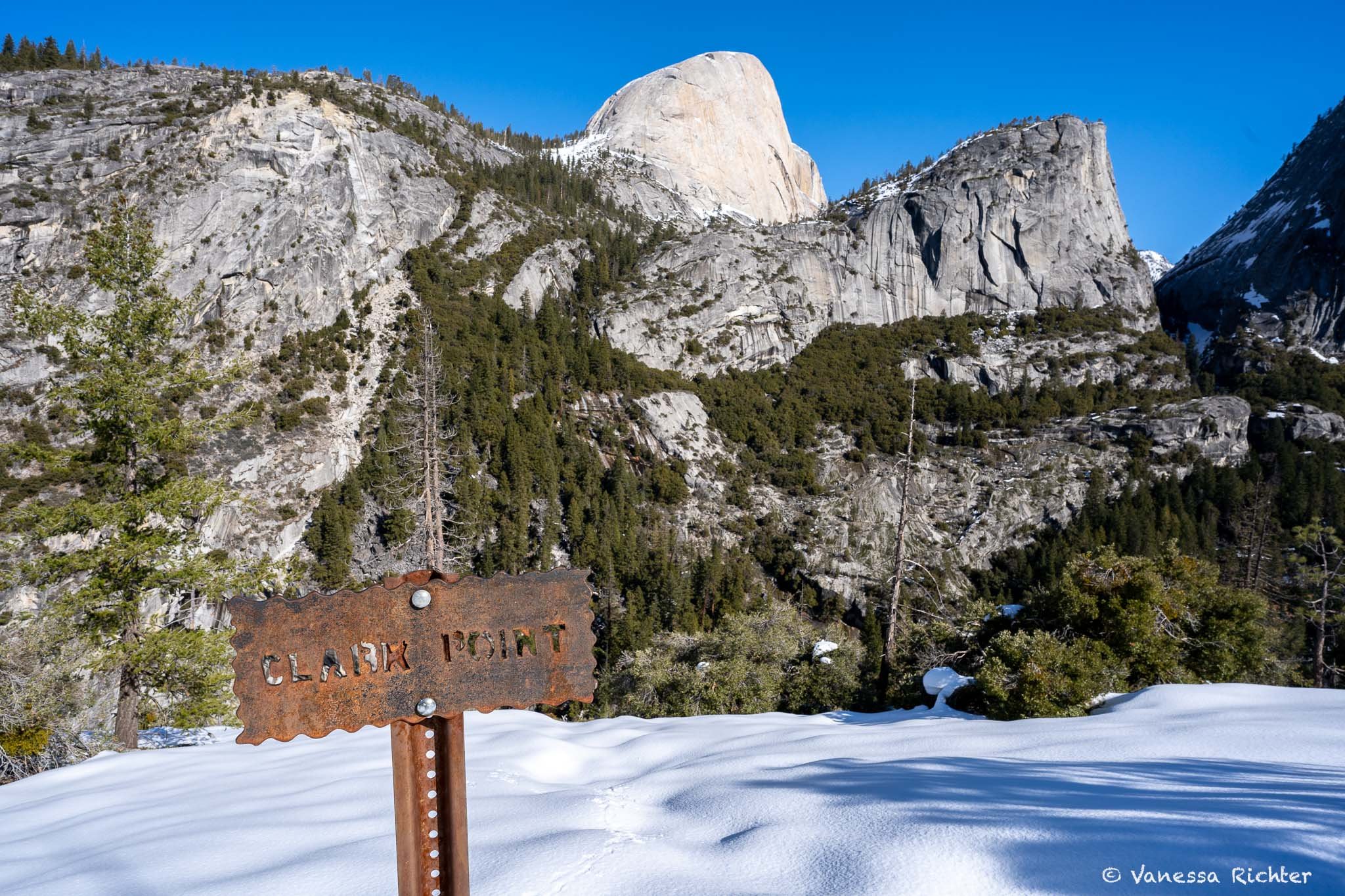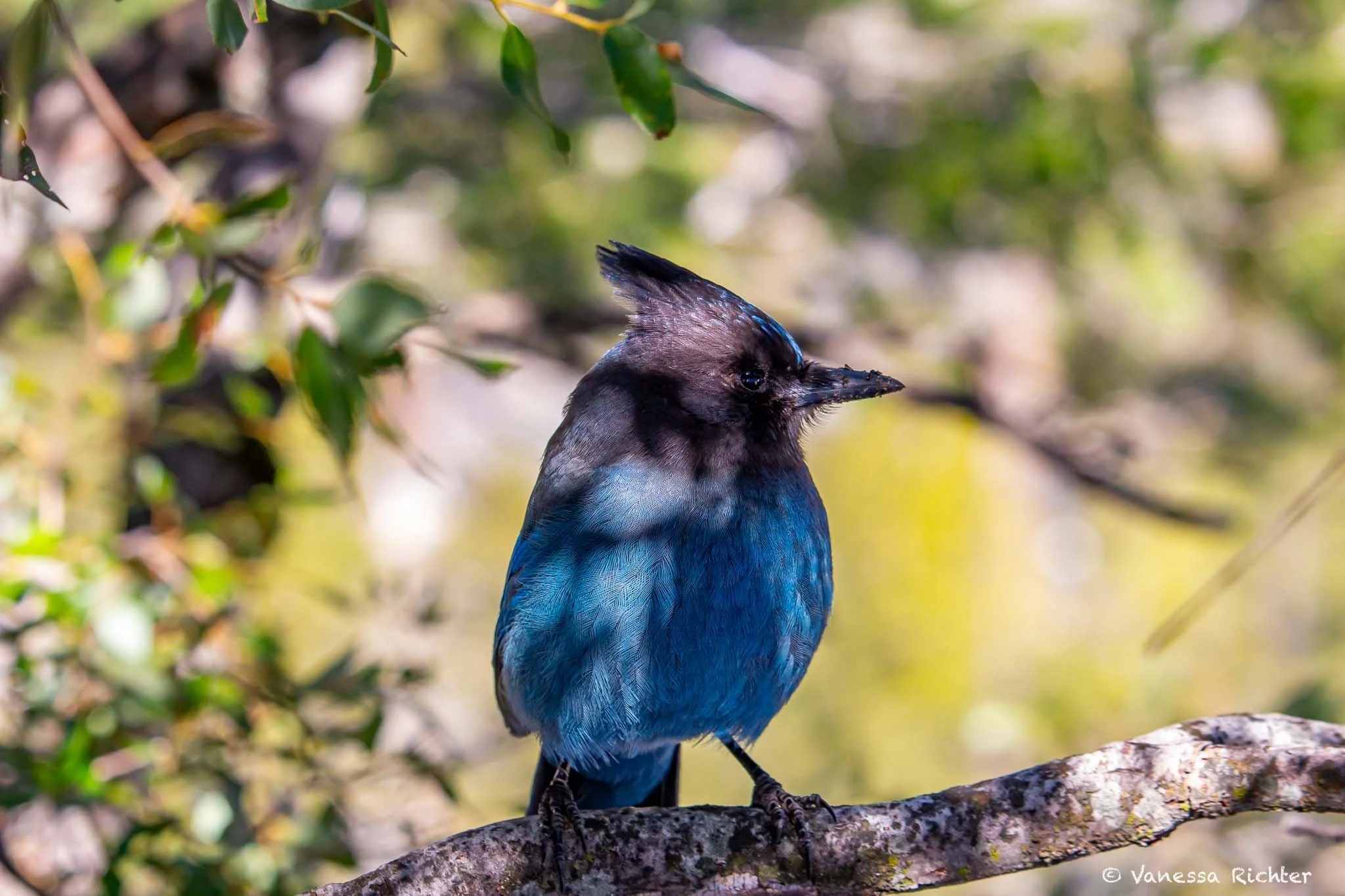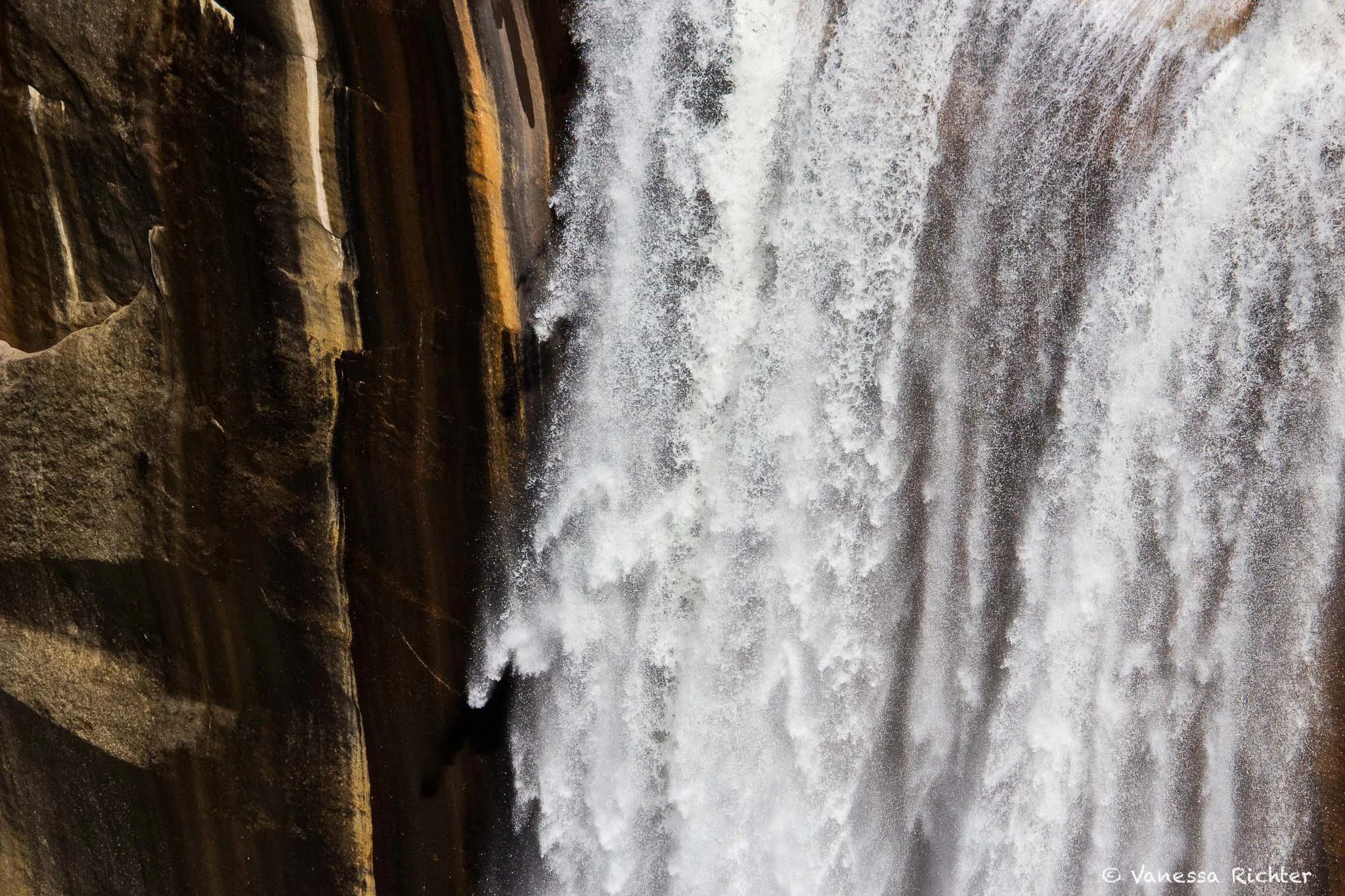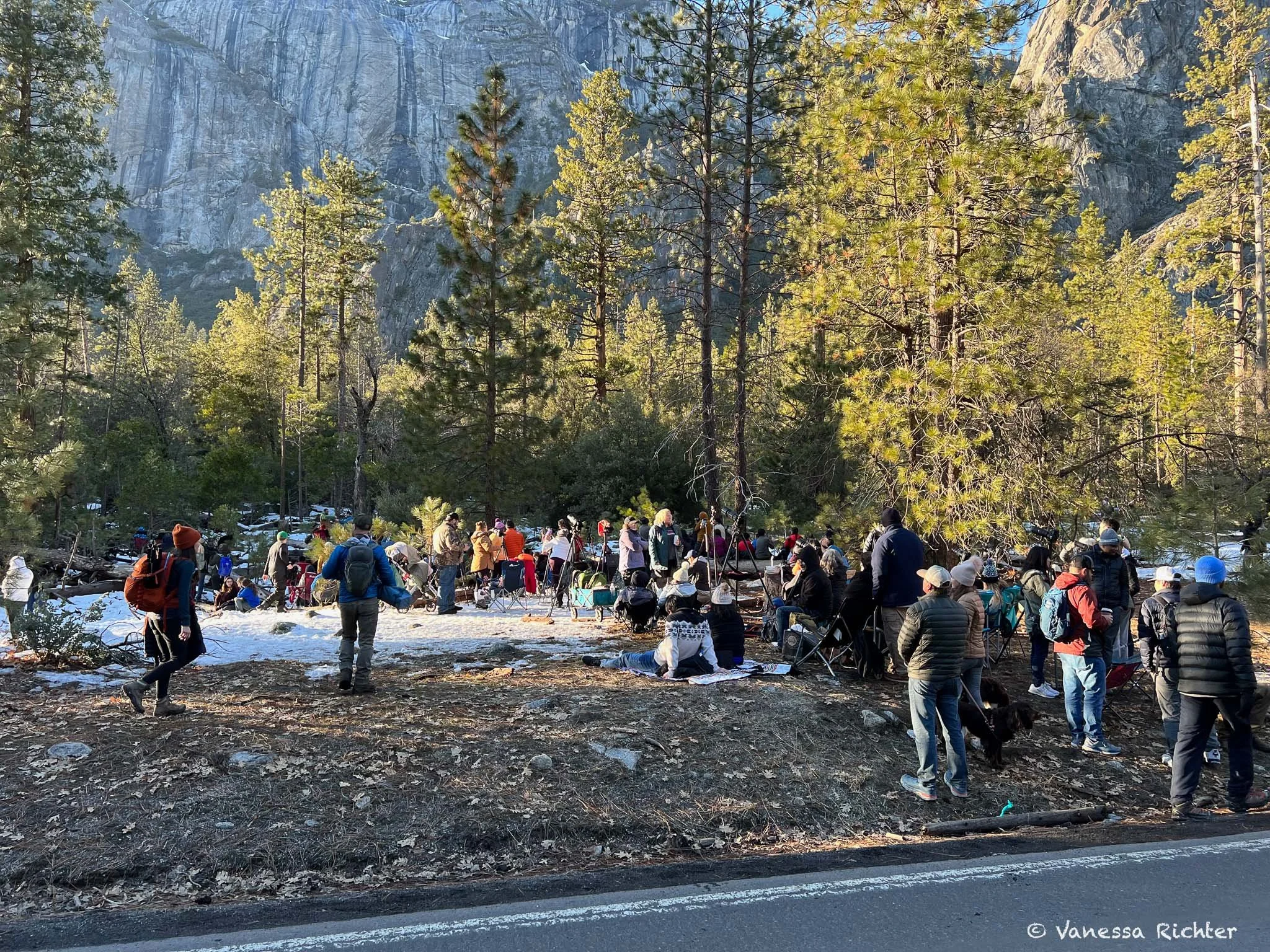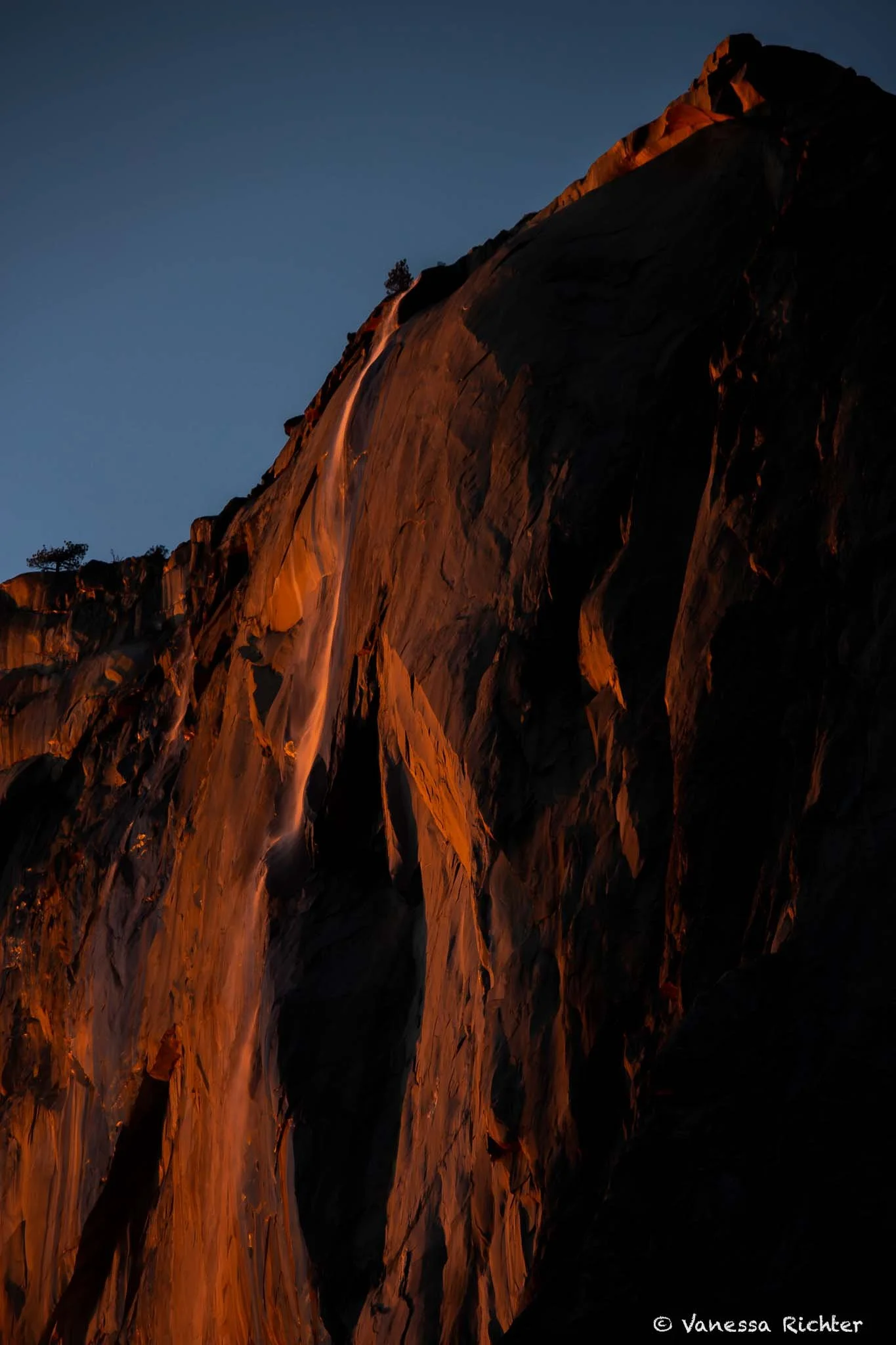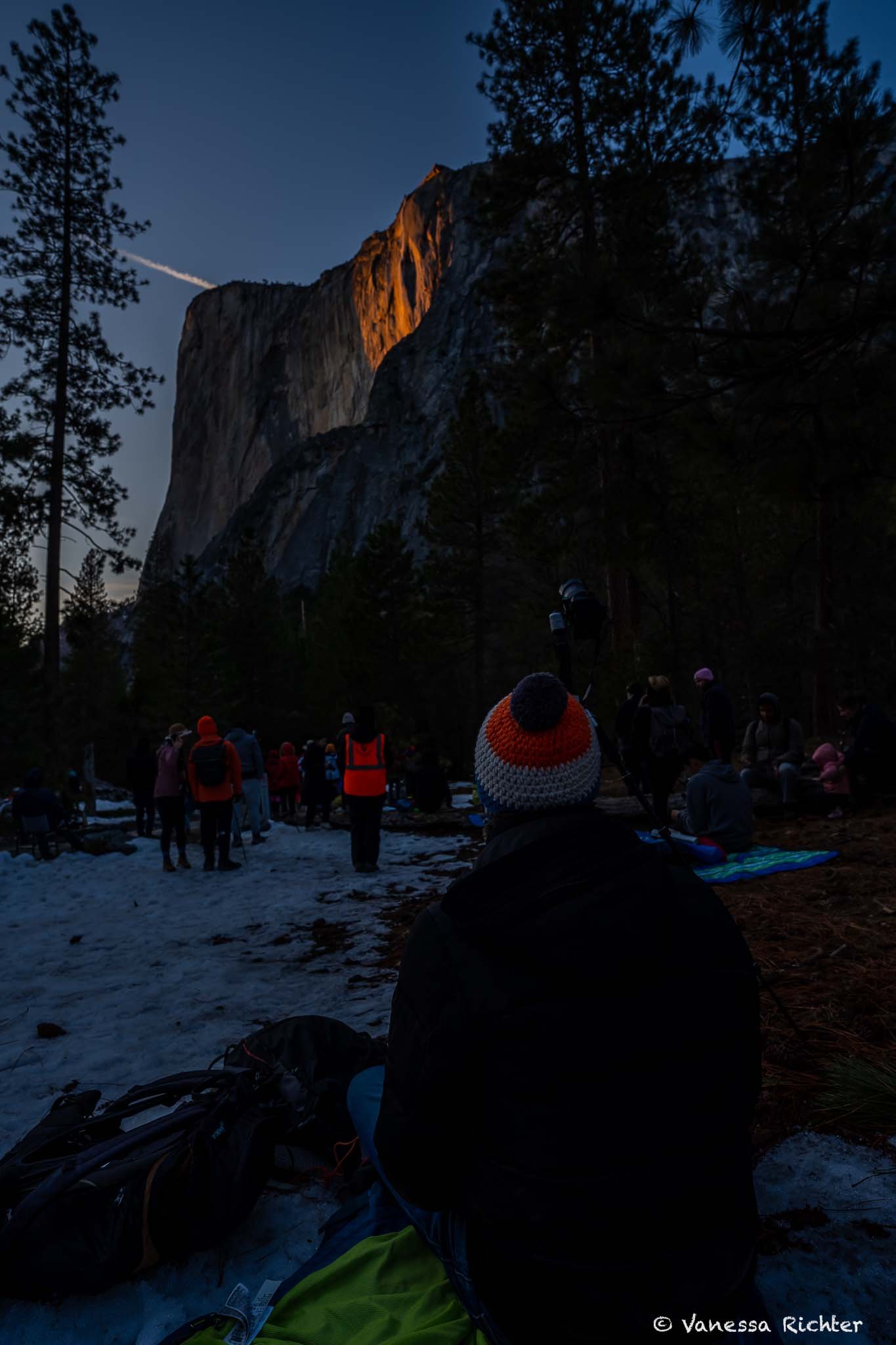Yosemite National Park In February: Firefall and Snow Hiking Adventure
Yosemite National Park is beautiful any time of year, but visiting in winter offers a chance to experience a true winter wonderland. If you visit from mid- to late February, you may also witness the phenomenon known as the Firefall, when the last rays of sunlight hit Horsetail Fall at just the right angle, making it appear as if fire, rather than water, is falling down.
Join me on a snowy hike along the Mist and John Muir Trails to Vernal and Nevada Falls, where I’ll show you how beautiful Yosemite National Park is in the grip of winter. Plus, I’ll share my advice on how and when to experience the Firefall and what to know before hitting the icy trails in Yosemite Valley!
Now that the busyness of summer had subsided and the last leaves have fallen from Yosemite’s few non-evergreen trees, the park had once again taken on its winter magic. Yet, today felt different. I was relieved and pleasantly surprised to find the hustle and bustle hadn’t begun yet. In the evening, everything would change. Mentally prepared, I embraced that this would be a unique experience shared with many: the Firefall.
The Firefall does not — in a literal sense — involve heat or actual fire. It’s named for its appearance, as if fire or lava were cascading off a cliff. This effect occurs on the eastern side of El Capitan, where the Horsetail Fall, a small seasonal waterfall, may glow in the last rays of sunlight.
But we hadn’t come only for the Firefall. We also wanted to hike the winter route to Vernal and Nevada Falls, combining stretches of the John Muir and Mist Trails. We were lucky this winter, and the falls weren’t completely dried out.
But let me start from the beginning:
“Great, we have everything we need!” I said, glancing at the brown package we’d picked up along the way. Inside were brand-new microspikes, perfect for navigating the icy trails ahead. Late winter’s contrasts in California are astonishing: along the coast, the trees bloom in pink, white, and yellow, while the high Sierra remains cloaked in snow. I love these extremes.
For days, I’d been watching the weather forecast, nervous and excited. I was so much looking forward to this trip. But if there was the possibility of a snow storm or heavy snow, we would have needed to call it off. We were lucky. Just clear skies and no indication of fresh snowfall whatsoever.
As we entered the park late in the afternoon, the roads were free of snow and the sky free of clouds, but fog lingered in the valley, wrapping around the base of El Capitan like a veil. It was peaceful, almost surreal. After getting a quick first taste of Yosemite in winter, we left under the cover of darkness to rest up for an early start the next day.
The following morning, we woke up early: tired, yet excited for the day ahead. At 7 am, we were already set to begin our hike. Since there is no parking lot at the trailhead, so we had to park a bit further away at Curry Village and walked the road. The trail was clear of ice and snow at first. I was almost a little disappointed that it seemed like we might not even need our brand new tools. As we ascended our way up to Vernal Falls, the gray underground slowly started to mix with the freezing white. At the beginning, we could still avoid stepping on the ice, but the further we went, the more inevitable it became. We paused and strapped over our microspikes. As we stepped on the icy ground without slipping, my brain needed a second to process this. Quickly, you could not see anything of the trail under the snow and ice anymore. There were not a lot of human footsteps on the trail anymore, but many animal prints that seemed to have crossed our path earlier. The snow got deeper and deeper, but only up to a level that was still well manageable with microspikes. We paused many times along our way to enjoy the magnificent views of Vernal & Nevada Falls and soak in the peaceful atmosphere.
We continued until we reached an overlook over Vernal falls. No one was there besides us and a steller's jay that seemed to be curious about the only visitors in his habitat.
The waterfall was flowing heavily for winter. The typical rainbow that can be spotted appearing in the mist of the heavy water flow did not appear. It was no less magical though as the water plunged down the smooth rock face into the river covered with rocks that appeared like ice floes at this time of year. After enjoying the view for a while, we continued until we crossed the footbridge to the top of Nevada Falls and turned around — to make sure that we did still get a parking spot within walking distance to the firefall. On the way down, more and more people populated the trail. I was happy that we had decided to come early.
We decided to get warm and cozy before heading to the Horsetail Fall. So, we got hot chocolate and a coffee first. Warmed up, we drove to the parking lot that was starting to slowly fill up. Excited for what might happen when the sun goes down, we headed to the viewing areas — together with A LOT of other people — quite contrary to our hike earlier.
Even though it was not exactly warm that evening in February, we spread out our blanket on the cold grass, set up our tripod, as did many others and waited with a snack of juicy dates in our hands.
I’m sure that this experience was a completely different one before social media made the firefall famous. And while I am often saddened by the changes that some places or experiences have undergone as a result, here I was able to embrace it. Everyone here was united in some way for the one thing that might not even happen, patiently waiting and staring minute by minute at the gray rock surface.
As the sun began to set, it seemed like the conditions could be good – at least the cloudless sky allowed a clear path for the sun to shine at the waterfall. The shine of the sun got more and more focused on the waterfall, becoming more golden minute after minute.
And then – the sun was gone.
No fire glow, just a bit of a reddish touch. Were we at the wrong spot, we wondered? A park ranger explained that though the weather conditions were quite good, the timing was not perfect as the angle of the sun was not pointed enough at the water trickle falling from the granite rock.
Even though the sun was already gone, the Horsetail Fall shone a last time silvery before it got completely dark.
On our way back, we tried to adapt our eyes to the pitch black surroundings. Suddenly, the girl walking in front of us started to scream. She pointed at the sky and we were immediately in awe: There was a chain of bright lights slowly moving through the night sky. They were strung together like pearls on a necklace.
Did we see extraterrestrial life first hand? Everyone was talking about what seemed so unbelievable.
— Well, it turned out – it wasn’t THAT extraterrestrial. The lights were just the Starlink Satellites that were visible just because of the very low light pollution in Yosemite. Still fascinating to observe and an exciting end of our trip.
Know Before You Go
Access
A fee is required to enter the park year-round.
Additionally, entry reservations are required for several weekends in February. Please find more infos on exact dates on the National Park Service Website.
Firefall
What is the Firefall?
The Firefall doesn’t actually involve fire; it’s named for its fiery appearance that resembles lava flowing off a cliff.
This unique glow effect happens on the eastern side of El Capitan at Horsetail Fall, a seasonal waterfall that may illuminate in the final rays of sunlight.
Best time
The chances to see the Firefall highly depend on weather conditions like wind, cloud cover as well as the precise angle of the sun, and the waterflow of the Horsetail Fall.
We visited on February 12—one of the three Firefall weekends in 2023 that required reservations. At that time, the sun hadn’t quite aligned sharply enough with the waterfall to produce the full effect.
The view was still beautiful, but for the peak experience, I’d recommend visiting a bit later in the month.
Parking
Park at Yosemite Falls parking near Yosemite Valley Lodge and walk 1.5 miles to the El Capitan Picnic Area.
If parking is full, you can park at Yosemite Village or Curry Village and take the free shuttle to Yosemite Falls parking/Yosemite Valley Lodge.
Safety
If you plan to hike, definitely bring warm boots as well as crampons or microspikes, it’s probably going to be icy! Snowshoes may also be useful, depending on snow depth. They definitely would have been overkill during the times we've visited in winter so far, but every year is different. Be sure to check conditions before heading out!
For the Firefall, be prepared to sit or stand in the cold for a while. It will be dark on the way back, so a headlamp may be useful, though we didn’t end up using ours.
Check the weather frequently before entering the park and avoid entering if there is a snowstorm in the forecast.
Winter tires are a must and bring snow chains as well – they may become obligatory at any time (they may check if you are carrying them) – the weather in the mountains can change quickly.
I’d love to hear from you
Have you been hiking in Yosemite during winter, or even witnessed the Firefall? What are your favorite winter hikes in Yosemite at this time of year?
Share your thoughts in the comments below!


